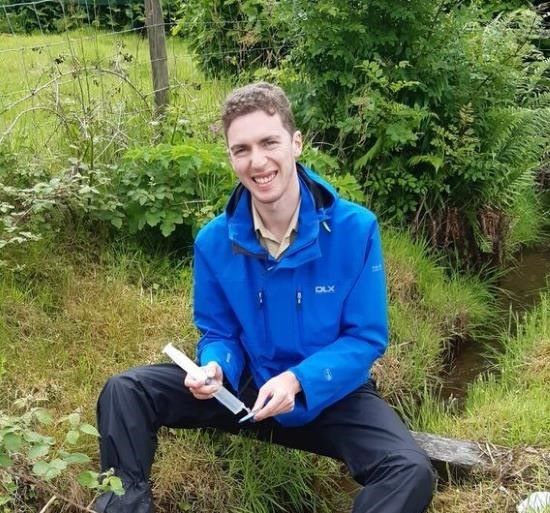
Aaron Todd
- Country:
- United Kingdom
- Course:
- PhD Physical Geography
What Faculty are you based in?
FSE, College of Science, Geography Department
How did you come to study at Swansea University?
I moved to Swansea in 2016 with my girlfriend (now my wife!) who was studying in the College of Arts and Humanities, and did an MSc in Environmental Dynamics and Climate Change in the Geography
Department. I really enjoyed the course, and not long after completing I worked at Natural Resources Wales (NRW) in their Environmental Analysis and Reporting Team, based at the University. In
late 2018 I successfully applied for a PhD funded by NRW and KESS 2 (an EU body in Wales), and so left NRW and rejoined the Geography Department in the fab Wallace Building.
What is your research topic?
Wales has over 1,300 abandoned metal mines (that we know of), varying from someone’s hobby mine for a few years, to massive mines employing hundreds of people for hundreds of years. As most of
these were closed before they were legally required to clean up after mining, they continue to have an impact on the environment around them. Sometimes this is just visual, but often the mine
workings will fill up with water, and then when it comes out, it’s gained metals, which are then hazardous to plants and animals further downstream. About 20 years ago the metal mines in Wales
were assessed for their impacts, and then ranked into a top 50, and the Welsh Government and NRW are working their way down from 1. I’ve been investigating where the metal contamination at one
mine, Nantymwyn in Carmarthenshire, gets from the old mine workings and waste, into the watercourses and then into the main river, using a variety of methods, including salt dilution flow
gauging, and tracer injection and synoptic sampling, in conjunction with Liverpool John Moores University.
What led to your interest in this area?
I’ve long loved rivers and the outdoors, as well as old engineering, and when I worked at NRW I was largely working on abandoned metal mines across Wales. When the funded PhD came up I couldn’t
not apply, and I was delighted to be the successful candidate!
What do you hope to achieve with your research?
My work has fed into NRW’s understanding of the mine, and guided further studies into the feasibility of remediating the site.
What are the best things about conducting your research at Swansea University?
The support of my supervisory team in Dr Iain Roberston and Professor Rory Walsh has been fantastic. They’ve both put in huge amounts of time to help with both academic queries, and pastoral
care. Outside of people, the travel expenses from KESS 2 meant I was able to visit the lead mine twice a month for a year, and then in November 2022 I went to the International Mine Water
Association Conference in New Zealand, where my presentation won first prize in their students’ competition, and €1,500!
What are your future plans?
In July I started working as an Environmental Consultant for WSP Ltd., a large multinational company with UK and Canadian roots, which covers a huge variety of areas, largely environmental and
engineering. Within my team I’ve already worked on groundwater pollution, drinking water supplies, risk assessments for drinking water supplies, flooding, advice, and climate change impacts, and
look forward to more of this interesting and varied work in the coming years.
